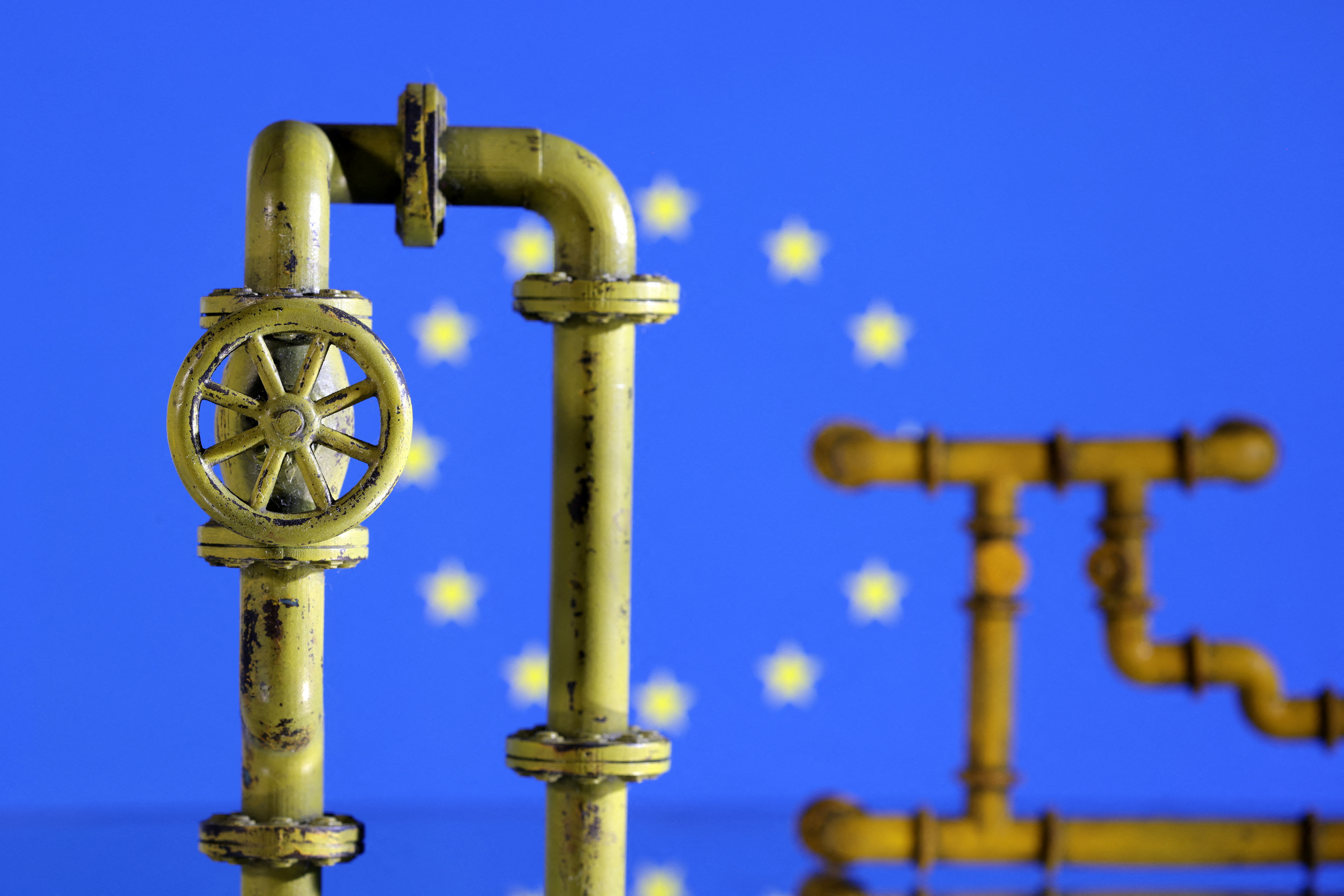LONDON, Nov 28 (Reuters) - Europe's gas inventories are on course to end the winter of 2022/23 at one of the highest levels on record - if prices stay high and provided pipeline deliveries from Russia continue.
European Union and United Kingdom (EU28) stocks amounted to 1,061 terawatt-hours (TWh) on Nov. 26, a record for the time of year, storage data from Gas Infrastructure Europe (GIE) shows.
Stocks have surpassed the previous seasonal high of 1,059 TWh set in 2019, when front-month futures prices were 16 euros per megawatt-hour compared with 119 euros at present ("Aggregated gas storage inventory", GIE, Nov. 28).
Exceptionally high prices, energy conservation, and warmer-than-normal temperatures since the middle of October have combined to cut consumption and attract large volumes of imported LNG.
Northwest Europe's heating demand, proxied by the number of heating degree days at Frankfurt, has been 22% lower so far this winter than the long-term average.
As a result, EU28 gas inventories are 186 TWh (+21% or +1.79 standard deviations) above the prior 10-year seasonal average, up from a surplus of 91 TWh (+10% or +0.86 standard deviations) at the start of October.
POST-WINTER CARRYOUT
Over the last 10 years, in a range of weather and price scenarios, inventories have depleted by an average of -531 TWh between Nov. 26 and the post-winter low.
Depletions have ranged from as much as -712 TWh in the winter of 2018/19 to as little as -311 TWh in the winter of 2014/15.
If the storage trajectory conforms to this pattern this winter, inventories are on track for a post-winter low of 530 TWh, with a likely range from 349 TWh to as much as 750 TWh.
The central projection of 530 TWh would leave end-winter inventories at the second-highest level ever, exceeded only by the winter of 2019/20.
Even the minimum projection of 349 TWh would leave post-winter inventories higher than in six of the last 10 years.
Chartbook: Europe gas inventories
These projections may be too high because they assume Russian pipeline gas is not halted by an embargo or sanctions, which would lead to a much larger depletion.
On the other hand, extraordinarily high prices are likely to dampen consumption far more than in any of the past 10 years, leading to a smaller than usual depletion.
Overall, the post-winter inventory situation is now looking much more comfortable than at the end of the third quarter, with a far lower risk that stocks will deplete to critically low levels.
The calendar spread between for benchmark gas futures with deliveries in March 2023 compared with April 2023 is one measure of the probability stocks will fall critically low before winter ends.
The March-April spread is now in a backwardation of less than 1 euro per megawatt-hour, down from 10 euros at the end of September, 26 euros at the end of June and 42 euros at the end of March, shortly after Russia invaded Ukraine.
The early start, late end, and record storage refill in 2022 has put inventories on course to end winter 2022/23 as much more comfortable â which will also make the refill in 2023 easier, provided Russian gas continues to flow.
Related columns:
- Europe's gas storage peaks after record refill season (Reuters, Nov. 18)
- Europe's gas prices retreat as storage almost full (Reuters, Oct. 13)
- Mission accomplished? Europe fills gas storage ahead of schedule (Reuters, Oct. 4)
- Europe tops up gas stocks, but winter demand cuts essential (Reuters, Sept. 7)
John Kemp is a Reuters market analyst. The views expressed are his own
Editing by David Evans
Our Standards: The Thomson Reuters Trust Principles.
Opinions expressed are those of the author. They do not reflect the views of Reuters News, which, under the Trust Principles, is committed to integrity, independence, and freedom from bias.


